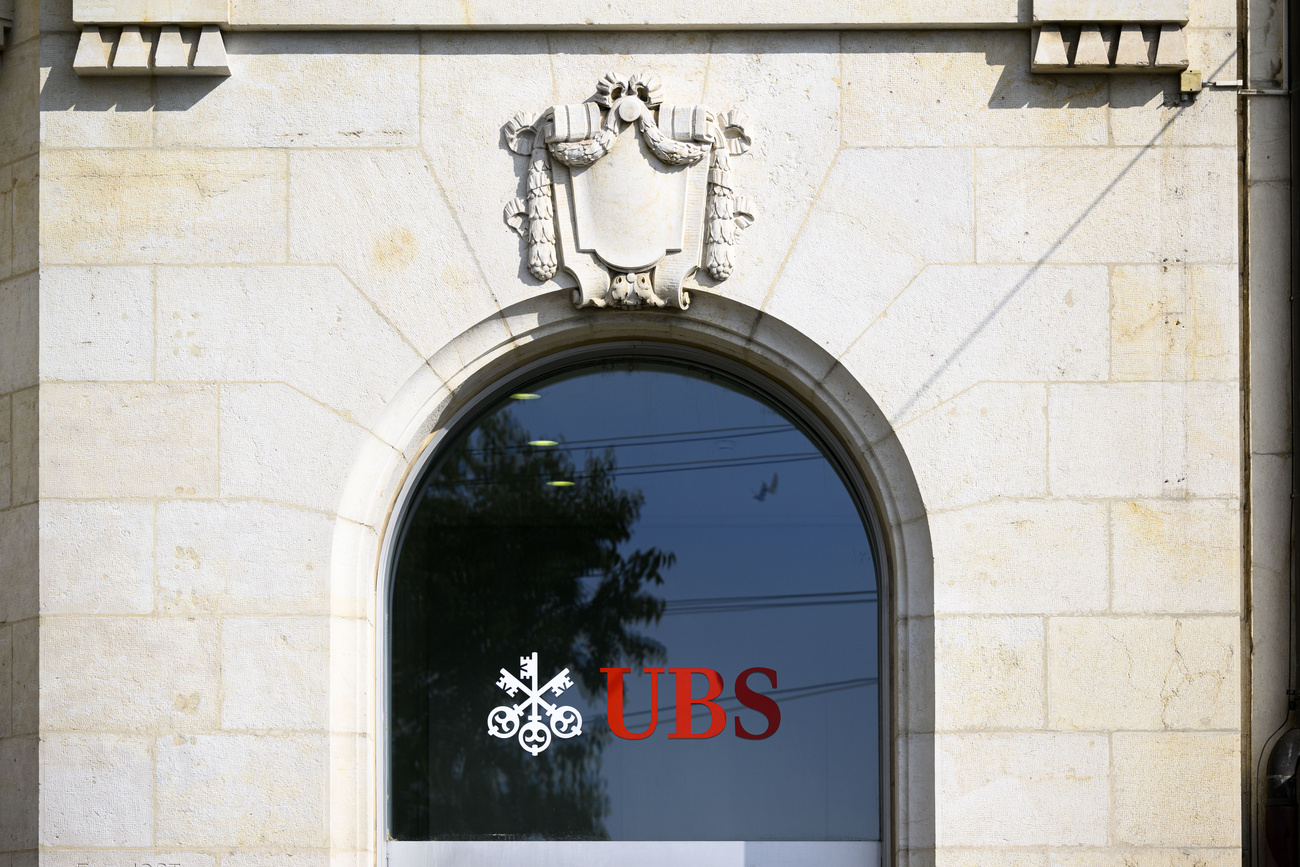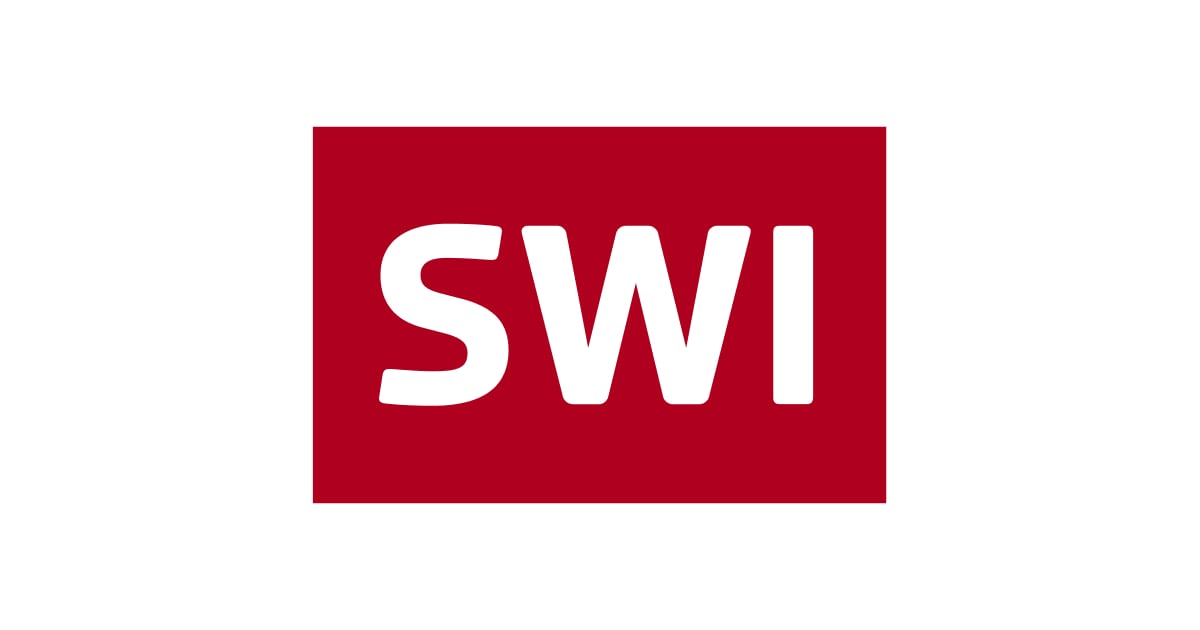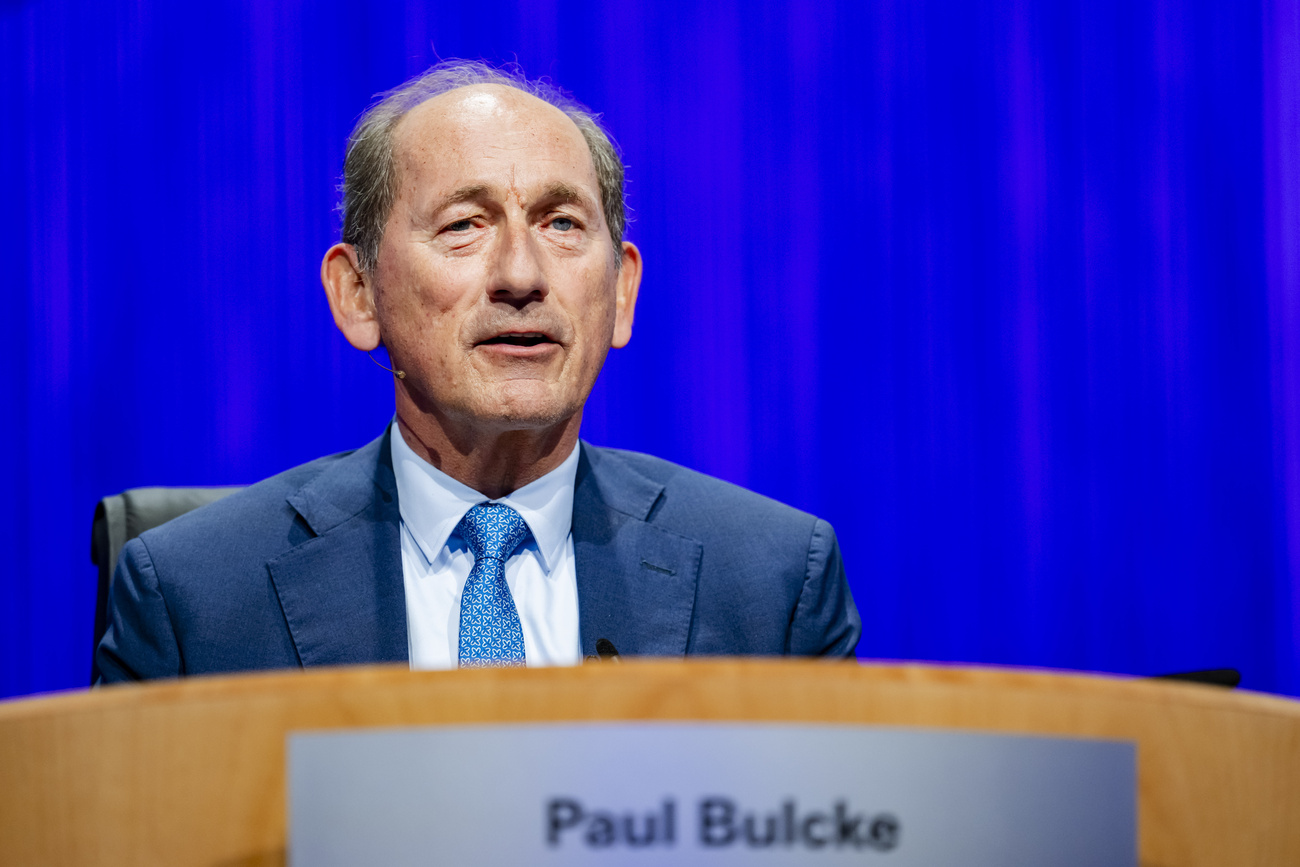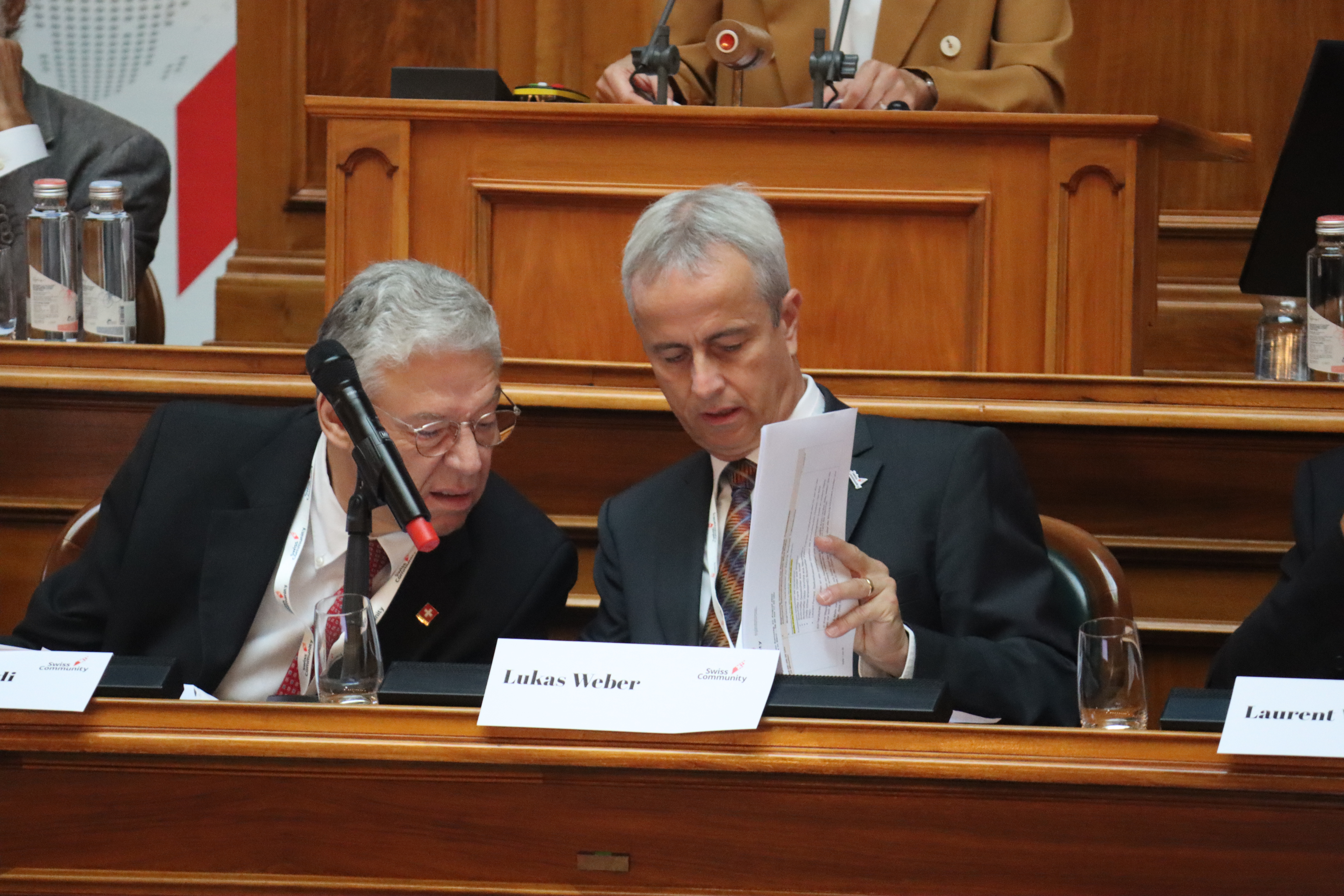
Fed Set to Drive Global Rate Cuts as Europe Shifts to Pause
(Bloomberg) — The Federal Reserve and global peers appear set to keep cutting interest rates in the remainder of this year, carrying on where much of Europe has left off.
That’s what Bloomberg Economics envisages, with reductions in borrowing costs predicted for 15 major central banks out of the 23 featured in this guide. Apart from the Bank of Japan, which is seen raising rates, the rest are anticipated to stay on hold.
The latter group is predominantly western European, with policymakers from Frankfurt to London and the Nordics forecast to halt easing cycles for now as policymakers gauge the strength of inflation. Even in Switzerland, where one final reduction into negative territory is anticipated, that’s predicted to be a short-lived trough.
By contrast, the Fed will follow up its cut last month with two more by year end, and continue with quarterly cuts in the first nine months of 2026, according to BE. But that unhurried pace takes into account the caution of officials watching for inflation stoked by President Donald Trump’s tariffs. The terminal rate for the US is now higher than predicted in the last edition of this guide in July.
What Bloomberg Economics Says…
“The job for central banks is getting harder. Tariffs threaten a blow to growth and — for the US — higher prices as well. Politics is intruding, most starkly in Washington DC, but also in Jakarta and maybe even Tokyo. Concerns about data reliability — familiar in China, now an issue in the US as well — add opacity. That nets out as a glide path down for the Fed, and most other central banks cutting rates too. If President Trump gets his way, the path down for the Fed will be more abrupt, and the cross currents for other central banks fiercer.”
—Tom Orlik, global chief economist
The same analysis applies to many of its peers: BE’s aggregate gauges of borrowing costs at the end of next year for both the world and for advanced economies are now each up by about a quarter-point compared to then. That reflects both economic resilience and lingering concerns about consumer prices.
Trump’s arrival at the White House, and his frequent jolts to financial markets, haven’t made the art of forecasting any easier. But with that proviso in mind, here is BE’s best collective quarterly judgment of the path for monetary policy at central banks responsible for a combined 90% of the global economy.
GROUP OF SEVEN
US Federal Reserve
Current federal funds rate (upper bound): 4.25% Bloomberg Economics forecast for end of 2025: 3.75% Market pricing: Money markets indicate a quarter-point cut at each of 2025’s two remaining decisions is likely. An additional couple of reductions in 2026 is fully priced as well as some hedging for a third cut. The coming quarter is crucial for the Fed on both the policy and political fronts. On policy, Fed officials voted in September to lower the central bank’s benchmark interest rate, the first cut in 2025, and projected another two cuts this year as they aim to support the labor market while keeping downward pressure on inflation. Fed officials next gather to decide policy on Oct. 28-29, when markets expect them to lower rates by another quarter point.
On the political front, White House pressure on the Fed to lower rates further is expected to continue. Trump may announce his pick to succeed Chair Jerome Powell, whose term ends in May. The US Supreme Court’s refusal to allow him to immediately oust Fed Governor Lisa Cook has eased pressure on the central bank, for now. The order means Cook can remain at her post at least until the justices rule after hearing arguments in the case in January.
What Bloomberg Economics Says:
“The FOMC is in a bind: cut rates too fast, the long-predicted acceleration in inflation from tariffs could materialize; not cutting fast enough, the labor market could deteriorate rapidly. Adding to the complexity of the risk assessment is President Trump’s pressure on the Fed to cut, and the government shutdown has halted official data releases. We think the Fed will take the path of least resistance — 25-bp cuts at each of the two remaining meetings — a trajectory that, in our view, reflects a dovish reaction function prioritizing labor-market risks and fending off the heat from Trump.”
—Estelle Ou
European Central Bank
Current deposit rate: 2% Bloomberg Economics forecast for end of 2025: 2% Market pricing: Investors are fully pricing a quarter-point by the end of the first quarter of 2026, with some hedging for an additional reduction later in the year. European Central Bank officials have made it clear that they’re comfortable with where rates are at present, concluding that inflation won’t stray too far from their 2% target and that the eurozone’s economy will continue to defy higher US tariffs by eking out growth.
If any questions remain, they’re over the final policy meeting of 2025 in December, when new quarterly projections will offer a first glimpse at 2028. While the hawks currently appear to be in the driving seat at the ECB, an undershoot in inflation that year — on top of similar forecasts for 2026 and 2027 — could embolden their dovish colleagues to push for one last cut in borrowing costs.
Bank of Japan
Target rate (upper bound): 0.5% Bloomberg Economics forecast for end of 2025: 0.75% Market pricing: Swaps imply a quarter-point rate hike is more likely than not before year-end, with another to follow in 2026. Bank of Japan Governor Kazuo Ueda is expected to finally ditch his wait-and-see stance this quarter by raising the benchmark rate. His nine-member board surprised traders with two dissenting votes against keeping the rate on hold last month, followed by a hawkish signal from one of the most dovish members, fueling market expectations for a near-term hike — potentially in October.
Japan’s key inflation gauge has been running above the BOJ’s target for more than three years while US tariffs have caused no major economic damage so far. The rate path also may be influenced by Sanae Takaichi, the expected new prime minister, who was elected to be the leader of the ruling Liberal Democratic Party at the weekend. Takaichi is known as an advocate of monetary easing.
What Bloomberg Economics Says:
“The BOJ looks set to deliver its next 25-bp rate hike in October. Inflation is stuck near 3%, even as the yen recoups some losses and oil eases. Governor Ueda appeared upbeat on the US and Japanese economies at his last press conference. The Tankan has since shown sentiment holding firm despite higher US tariffs. Even a dovish voice on the board now sees a case for tightening. The BOJ probably thinks it’s safe to move.”
—Taro Kimura
Bank of England
Current bank rate: 4% Bloomberg Economics forecast for end of 2025: 4% Market pricing: Traders are betting the BOE will keep its key rate on hold through the end of the year, before conducting a couple of rate cuts in 2026. The Bank of England has turned cautious on cutting rates further, as it tries to stamp out the threat from a fresh spike in UK inflation.
Governor Andrew Bailey has signaled major doubts over whether the central bank will continue its gradual once-a-quarter pace of rate reductions with stark divisions over policy at recent meetings.
The next meeting is sandwiched between September inflation data that are expected to show price growth peaking at 4%, and the government’s autumn budget on Nov. 26. Policymakers are growing concerned about how surging food bills will affect already-rising household inflation expectations.
What Bloomberg Economics Says:
“With inflation on course to hit 4% in the months ahead and expectations about future price gains elevated, we think the BOE is likely to stay on hold over the remainder of the year and in the early months of 2026. Clearer signs of disinflation are likely to emerge by the spring, at which point we expect rates to fall further. We think the terminal rate for the cycle will be 3.5% – our view of neutral.”
—Dan Hanson
Bank of Canada
Current overnight lending rate: 2.5% Bloomberg Economics forecast for end of 2025: 2.25% Market pricing: Swap markets are pricing another quarter-point cut this year, before officials likely keep policy on hold in 2026. The Bank of Canada restarted cutting its policy rate in September, trimming to 2.5% after three consecutive pauses. Officials are expected to ease monetary policy further as the economy reels from the trade damage posed by Trump’s tariffs. The pace of additional cuts will depend heavily on core price pressures, which are trending above the central bank’s 2% inflation target, and growth, which is expected to remain sluggish for the rest of the year.
Governor Tiff Macklem has made it clear he doesn’t want a tariff problem to turn into an inflation problem, and although exports, investment and the jobs market have worsened this year, economists say the country should narrowly avoid recession. There’s also major uncertainty about how tariffs will pass-through to consumer prices, and in November, Prime Minister Mark Carney will deliver a federal budget that’s widely expected to contain plans for significant fiscal outlays. That makes upcoming jobs and inflation prints key guideposts for the central bank’s October decision.
What Bloomberg Economics Says:
“The consequences of US-Canada trade tensions were evident enough in the second-quarter GDP contraction and the weakening labor market to encourage the Governing Council to resume cutting rates. So far, 3Q data suggest Carney’s industry-specific support programs are undergirding economic activity, but delayed investment plans and weak spending will limit growth. We expect the Governing Council to cut rates once more in December before going on an extended pause.”
—Stuart Paul
G-20 CENTRAL BANKS
People’s Bank of China
Current 7-day reverse repo rate: 1.4% Bloomberg Economics forecast for end of 2025: 1.3% China is heading into the fourth quarter after two of the worst months for the economy this year and with only initial signs that deflationary pressures are starting to moderate. But that hasn’t accelerated the timeline for the central bank to loosen monetary policy again, partly for fear cheaper money could inflate a stock market bubble.
While maintaining an easing bias, the PBOC has been on pause since May, when it acted at the height of tensions with the US over trade. With economic growth on track to decelerate near 4% in the final three months of the year, most forecasters still expect the People’s Bank of China to go ahead in the fourth quarter with small cuts to its policy rate and lenders’ reserve requirement ratio.
Still, the official goal of economic growth around 5% for this year is likely within reach, creating less urgency for another round of easing from the PBOC. Discussions at a closed-door meeting of the ruling Communist Party, set for Oct. 20-23, could help determine if the time has come for more stimulus.
What Bloomberg Economics Says:
“China’s weak data in the third quarter has called for more policy support to avoid a steeper growth pullback, but the heated stock prices mean any additional stimulus will be calibrated to avoid adding fuel to the market rally. Balancing these considerations, the PBOC is likely to deliver some mild monetary easing in 4Q — including 10 basis points of rate cuts and 25 bps of easing in the reserve requirement ratio.”
—Eric Zhu
Reserve Bank of India
Current RBI repurchase rate: 5.5% Bloomberg Economics forecast for end of 2025: 5.25% The Reserve Bank of India kept its key rate unchanged at 5.5% in the October meetings but Governor Sanjay Malhotra said easing price pressures have opened space for a possible cut later.
This is a departure from June, when the central bank had said the monetary policy had “very limited space” left to support growth. Since then, the US has imposed 50% tariffs on Indian goods, and Trump hit India’s IT-dependent services sector by raising H1B visa fees sharply.
India’s growth, though, has stayed resilient so far while inflation has eased. The RBI lowered its inflation forecast for the year through March to 2.6% from 3.1%, while raising its growth outlook to 6.8% from 6.5%, citing the recent consumption tax rationalization and past rate cuts as drivers of demand and lower prices.
What Bloomberg Economics Says:
“The RBI’s October hold lacked a solid rationale after sharply revising down its inflation and growth outlooks, with the Fed already cutting rates in September. It acknowledged space for easing has opened up, and two of six members favored an accommodative stance over neutral. We see more downside risks to even RBI’s lowered inflation and growth projections. We expect a 25-bp cut and stance shift to accommodative in December, followed by a final 25-bp cut in February.”
—Abhishek Gupta
Second RBI Hold Doesn’t Mean End of Easing Cycle
Central Bank of Brazil
Current Selic target rate: 15% Bloomberg Economics forecast for end of 2025: 15% Brazil’s central bank is holding its rate at a nearly two-decade high as policymakers evaluate if that level will be enough to slow consumer price increases to target. Annual inflation has eased, and overall activity has weakened in recent months.
Still, government spending and record-low unemployment are supporting demand while also fueling services cost pressures. Consumer price expectations remain above the central bank’s 3% goal through 2028.
The hawkish tone used by policymakers in their communication has led analysts to bet that any rate cuts will only happen in 2026. “There is still a lot of work ahead of the central bank,” the institution’s Governor Gabriel Galipolo said on Sept. 29.
What Bloomberg Economics Says:
“The unwavering hawkish stance of the Brazilian central bank is a low-cost strategy to boost confidence in a board that, as of early 2026, will be fully comprised of President Lula’s appointees. Despite a cooling economy and mildly improving underlying and expected inflation, we believe the BCB will keep rates unchanged through year-end. This may cement its inflation-fighting credibility, which would in turn allow the bank to cut rates more aggressively in 2026 — without damaging its reputation.”
—Adriana Dupita
Bank of Russia
Current key rate: 17% Median economist forecast for end of 2025: 15% Bank of Russia Governor Elvira Nabiullina is warning that risks from a ballooning government budget deficit stoked by spending on the war in Ukraine could limit room for further reductions in the key rate, following 4 percentage points in cuts from a record-high 21% since June. Proinflationary pressures continue, with annual price growth still at twice the 4% target projected for 2026.
The central bank forecast a yearly average key rate of 12%-13% next year in the baseline scenario of its latest draft 2026-2028 monetary policy guidelines published late September. That rose to 14%-16% under a proinflationary scenario.
South African Reserve Bank
Current repo average rate: 7% Bloomberg Economics forecast for end of 2025: 7% South Africa’s monetary policymakers are expected to hold rates steady for a second consecutive meeting in November, aiming to anchor inflation at the lower end of their 3%-to-6% target range, where they signaled in July they prefer it to settle.
The central bank’s quarterly projection model sees inflation quickening to 4% in the final quarter before easing to 3% by 2027, and signals scope for at least 75 basis points of rate cuts next year. Governor Lesetja Kganyago has long maintained that the model remains a broad policy guide and that future decisions “will be taken on a meeting-by-meeting basis, with careful attention to the outlook, data outcomes, and the balance of risks to the forecast.”
What Bloomberg Economics Says:
“The SARB looks set to stay on hold to defend its stricter 3% inflation goal, down from the old 4.5% focus. The stance matters as inflation is on track to rise to just under the midpoint of the 3%-6% target range by year end and hold there through 2026. To keep the door open for a return to the lower bound, the bank will likely keep rates at 7.0% through this year and into 2026.”
—Yvonne Mhango
Banco de Mexico
Current overnight rate: 7.5% Bloomberg Economics forecast for end of 2025: 7% Mexico’s central bank is expected to continue its easing cycle as a prolonged economic slowdown supports policymakers’ view that consumer price increases will reach the 3% target in the third quarter of next year. The bank has defended its recent decisions to lower borrowing costs despite core inflation that is running above its target range, arguing cost pressures are smaller than those observed in the past.
The strengthening of the Mexican peso and the Fed’s recent rate cut also support the easing cycle. Still, the board has warned that trade uncertainty unleashed by the US government poses risks to inflation that they will be closely monitoring.
What Bloomberg Economics Says:
“Weak domestic demand and economic slack into 2026 will help ease pressure on Mexico’s consumer prices. Inflation is likely to remain above the central bank’s 3% target midpoint, but the slowdown will be enough for policymakers to unwind remaining monetary constraints with further rate cuts. A weaker dollar and Fed rates cuts will alleviate concerns about potential peso depreciation, giving Banxico more flexibility. The primary risks are persistently high core price gains and inflation expectations.”
—Felipe Hernandez
Bank Indonesia
Current 7-day reverse repo rate: 4.75% Bloomberg Economics forecast for end of 2025: 4.5% After violent protests erupted over jobs and living costs, Bank Indonesia is under pressure to do more to support Southeast Asia’s largest economy. Governor Perry Warjiyo said monetary policy would now be “all-out pro-growth,” signaling more rate cuts on top of the 150 basis points so far this easing cycle. BI will also shoulder some of the debt costs of President Prabowo Subianto’s social welfare programs — an arrangement that was only allowed during the pandemic.
These measures have raised concerns among investors about the autonomy of the central bank. They could also test BI’s mandate of price and currency stability, as the government’s rampant spending on stimulus risks spurring inflation and triggers outflows that have dragged the rupiah to near record lows.
What Bloomberg Economics Says:
“Bank Indonesia is easing more aggressively in a push with the government to boost growth. It has cut by 150 bps since Sept. 2024, stepping up the pace in 3Q25. It also signed onto a new burden-sharing arrangement with the finance ministry – going “all-out” for growth in the wake of nationwide protests laying bare the urgency to implement President Prabowo’s social agenda. Previously, BI was more wary of undercutting the rupiah. We expect 75 bps of cuts in 4Q25.”
—Tamara Henderson
Central Bank of Turkey
Current 1-week repo rate: 40.5% Bloomberg Economics forecast for end of 2025: 35% Turkey’s central bank will likely continue its rate cuts in the remaining two meetings this year though external and domestic risks put pressure on the inflation outlook. Policymakers’ task in slowing prices has been complicated by Trump’s tariff plans and more so by political turmoil at home over a crackdown against the main opposition party, CHP, that’s reflected on markets.
The central bank has vowed to dispel any risk that would endanger the disinflation process while a key hearing against the opposition will take place right after a rates meeting this month. Majority of analysts expect the bank to continue its cutting cycle but say the pace could slow. Goldman Sachs analysts last increased their year-end policy rate forecast to 37% from 35.5%.
What Bloomberg Economics Says:
“The CBRT will keep loosening financial conditions, with slowing growth and easing inflation providing cover. We expect cuts at both remaining meetings this year, lowering the policy rate to 35% by year-end. Risks lean toward higher inflation – including from a faster lira slide – which could curb room to ease. Given the broader slowdown in inflation, however, we view this as signalling smaller cuts than in our current projection rather than a shift toward tighter conditions.”
—Selva Bahar Baziki
Central Bank of Nigeria
Current central bank rate: 27% Bloomberg Economics forecast for end of 2025: 26.5% Nigeria’s central bank is expected to continue easing in November after cutting its key rate for the first time in five years to 27% from 27.5% last month on “sustained disinflation.”
Governor Olayemi Cardoso said the central bank expects the disinflation trend to continue as improved oil production will likely bolster foreign-exchange reserves and sustain the recent stability in the naira.
Still, concerns remain about the build-up of excess liquidity in the banking sector, driven largely by higher government revenues. The bank has introduced a 75% cash reserve ratio on certain public sector deposits to help absorb the surplus.
What Bloomberg Economics Says:
“With disinflation set to persist, Nigeria’s central bank is likely to continue lowering rates from 27.0% in November and through 2026. The main harvest starting in September, alongside a firmer naira, should ease food costs, pulling annual inflation into the teens as early as September and driving a broader slowdown in the months ahead.”
—Yvonne Mhango
Bank of Korea
Current base rate: 2.5% Bloomberg Economics forecast for end of 2025: 2.25% The Bank of Korea is edging closer to another rate cut to support the economy after the Fed’s move in September. Five of six board members have already signaled they are open to a reduction this autumn, a stance that suggests the only question is whether the cut comes in October or November.
Still, the timing debate has grown more complicated as the board gauges the impact of higher US tariffs on exports and the continuing rise in apartment prices in the capital, a rally likely to feed into higher household debt. Governor Rhee Chang Yong has warned that cutting rates too soon may exacerbate that debt risk, a warning echoed in the BOK’s financial stability report.
What Bloomberg Economics Says:
“The BOK has paused but it’s still in an easing cycle. It needs to shore up domestic demand and cushion the impact of US tariffs. With Seoul’s housing market heating up again it will move cautiously — it won’t risk stoking another property boom. We expect the BOK to deliver two more 25-bp cuts this cycle, taking the policy rate down to 2.0%. The next could come as soon as November, if housing prices show signs of stabilizing.”
—Hyosung Kwon
Reserve Bank of Australia
Current cash rate target: 3.6% Bloomberg Economics forecast for end of 2025: 3.35% The Reserve Bank of Australia is edging toward the end of its easing cycle, with Governor Michele Bullock signaling policy will now be more data dependent as officials assess the path of inflation.
Economists expect the next cut in November, while financial markets are betting on March 2026 — a gap that underscores the uncertainty hanging over the outlook. Much rests on third-quarter CPI, due at the end of October, which will determine whether the central bank cuts further or extends it pause.
Australia’s labor market is close to full employment though its export-driven economy remains vulnerable to global headwinds. For now, policymakers are watching how slowing Chinese demand and volatile commodity prices feed through, while hoping domestic momentum cushions the impact.
What Bloomberg Economics Says:
“The RBA’s September pause confirmed our view that the RBA’s easing cycle was likely – barring a significant downside shock — to be a cautious, gradual and data dependent one. Our base case is for additional 25 basis point cuts in November and we see further rate cuts in 2026, taking the cash rate to 2.50%, below the RBA’s downwardly-revised neutral cash rate estimate.”
—James McIntyre
Central Bank of Argentina
Argentina’s central bank now targets monetary aggregates Argentina’s central bank is currently negotiating a $20 billion currency swap line with the Trump administration, but it’s unclear when or if the money will arrive in Buenos Aires.
The monetary authority has also tightened its grip on local markets before the nation’s midterm elections on Oct. 26 even as it lets the peso trade freely within an established range. To take pressure off the currency, policymakers have increased reserve requirements for commercial banks and prohibited individuals from buying dollars at the official rate and selling them at the more advantageous parallel rate.
Meanwhile, the central bank didn’t comply with a key target in Argentina’s $20 billion IMF program to accumulate reserves, driving market speculation of a policy change after midterms.
What Bloomberg Economics Says:
“The central bank’s abandonment of its rate-targeting policy, announced in June led to havoc in interbank rates in the third quarter. The government appears to have learnt the lesson, with the central bank now providing liquidity via its repo window. We expect the government to maintain a rate-targeting policy in place more or less explicitly in coming quarters. Repo rates seem likely to inch higher in late 2025 as inflation ticks up in response to market turmoil, but resume a downward path thereafter if market conditions stabilize.”
—Jimena Zuniga
Central Bank Policy Shift Led to Havoc in Interbank Rates
G-10 CURRENCIES AND EAST EUROPE ECONOMIES
Swiss National Bank
Current policy rate: 0% Bloomberg Economics forecast for end of 2025: -0.25% The SNB is keeping investors guessing on whether it will be the world’s first central bank to reintroduce negative rates. Officials led by President Martin Schlegel left borrowing costs at zero last month and signaled optimism that inflation is accelerating from its very slow levels. But a sharper hit to growth from the developed world’s highest US tariff could prompt them to reconsider another cut.
Ahead of the next policy decision on Dec. 11, about a quarter of economists expect a move to -0.25%. Policymakers are closely watching talks between Bern and Washington over the trade levies, as well as the franc’s surge. The currency has strengthened about 14% against the dollar this year, squeezing Swiss exporters and weighing on import prices.
What Bloomberg Economics Says:
“The SNB’s September hold buys time to gauge the impact of US tariffs and a strong franc on the economy. Looking ahead, we anticipate a move into negative territory at its next meeting in December if the currency stays firm. The SNB should provide some guidance on its reaction function when it publishes — for the first time — the minutes of the September meeting later this month. ”
—Jean Dalbard
Sveriges Riksbank
Current policy rate: 1.75% Bloomberg Economics forecast for end of 2025: 1.75% Sweden’s central bank appears done with rate cuts, unless the battered Nordic economy takes another hit from unpredictable US tariff policies. Riksbank officials reduced their rate to a three-year low of 1.75% from 2% in September to provide further support to the economy. They expect to leave borrowing costs there until the end of next year as growth prospects brighten and inflation eases.
The bank could also announce its pick to replace the outgoing Anna Breman, one of its five rate setters, who is leaving Oct. 10 to head the Reserve Bank of New Zealand. Her departure may tilt the executive board into a more hawkish direction.
What Bloomberg Economics Says:
“The Riksbank looks set to remain on hold for the foreseeable future. The risk in the near term is that weak domestic demand prompts the central bank to ease again. Moving into 2026, we think the balance of risks will shift in a more hawkish direction as fresh fiscal stimulus comes online. The looming exit of First Deputy Governor Anna Breman will leave the Executive Board more hawkish, but we don’t expect that to alter the near-term policy path.”
—Selva Bahar Baziki
Norges Bank
Current deposit rate: 4% Median economist forecast for end of 2025: 4% Norway’s central bank is set to slow the pace of its easing campaign to just one move annually over the coming three years after officials last month delivered their second quarter-point cut since pivoting in June.
The decision to act was mainly due to lower imported inflation, declining wage growth and an expected reduction in businesses’ costs, while Governor Ida Wolden Bache stressed that the job of bringing price growth back to the central bank’s 2%-target isn’t finished.
Underlying inflation is still seen running at 2.8% next year, while Norges Bank revised higher its forecasts for mainland economic output this year and next, to 2% and 1.5%, respectively.
Reserve Bank of New Zealand
Current cash rate: 3% Bloomberg Economics forecast for end of 2025: 2.75% The Reserve Bank of New Zealand turned dovish in August as it became clear the economy was in worse shape than expected – later confirmed by data showing it contracted 0.9% in the second quarter, three times more than the bank’s forecast.
Rate cuts at the remaining two policy decisions of the year are now all but certain, the only question remaining whether one of them could be a 50 basis-point reduction.
While economists and investors are unsure whether the cash rate will end the year at 2.5% or 2.25%, they all agree it will need to move below its current neutral level to stimulate activity.
Amid the policy intrigue, Breman will become the first female RBNZ governor on Dec. 1.
What Bloomberg Economics Says:
“The RBNZ has flipped from inflation to growth concerns, following persistent weak demand and a sluggish labor market. We expect the OCR to fall to 2.50% in 4Q25 – 40 basis points below the central bank’s estimate of neutral. Riksbank First Deputy Governor Breman takes the helm on Dec. 1, but there’s a risk that the RBNZ’s the easing cycle may be over before her term begins.”
—James McIntyre
National Bank of Poland
Current cash rate: 4.75% Median economist forecast for end of 2025: 4.5% Governor Adam Glapinski is likely to continue moving cautiously with rate cuts, although the scope for much more additional easing remains limited because of loose budget spending.
Policymakers in Warsaw have reduced borrowing costs three times this year as inflation returned within the tolerance range around their 2.5% target. Glapinski said after the meeting in September that he was hopeful the central bank will be able to cut some more.
The main concern for the majority on the Monetary Policy Council is Poland’s fiscal outlook — the country is running the European Union’s second-widest budget deficit. Glapinski said he wants to avoid a situation where rates are reduced too quickly, forcing him into a U-turn if inflation returns.
Czech National Bank
Current cash rate: 3.5% Median economist forecast for end of 2025: 3.25% The Czech central bank has said monetary policy must stay tight to tackle risks from sticky services inflation, red-hot property market and growing budget deficits. Money-market prices signal a bigger likelihood that the next policy move will be a rate hike rather than another cut, although Governor Ales Michl has refused to declare the easing cycle over.
The koruna, which is one the best performers among global currencies this year, will play a key role in future decisions.
“A strong koruna exchange rate is one of the reasons why we are leaving all options open and why it still can’t be ruled out that the next step will be either lowering rates or increasing rates,” Michl said last month.
–With assistance from Claire Jiao, Enda Curran, Erik Hertzberg, Ezra Fieser, Greg Ritchie, Heesu Lee, Martha Beck, Matthew Brockett, Matthew Malinowski, Michael S. Arnold, Monique Vanek, Nduka Orjinmo, Ott Ummelas, Paul Abelsky, Patrick Gillespie, Peter Laca, Piotr Skolimowski, Swati Pandey, Tom Rees, Tony Halpin, Scott Johnson (Economist), Toru Fujioka, Andrew Langley, Anup Roy, Alex Vasquez, Bastian Benrath-Wright, Beril Akman and Christopher Condon.
©2025 Bloomberg L.P.



































